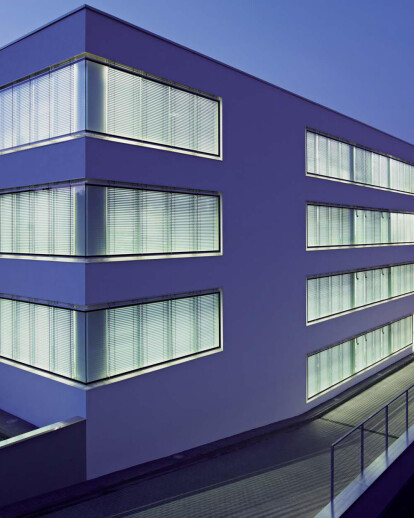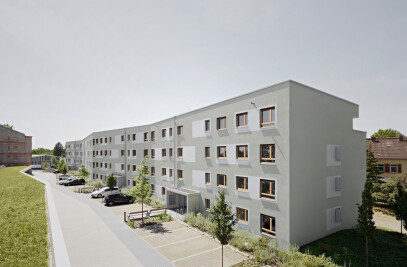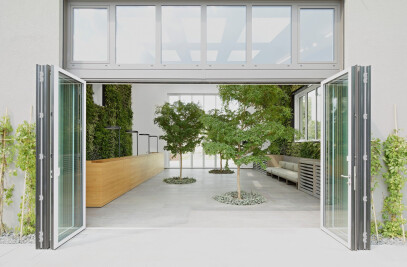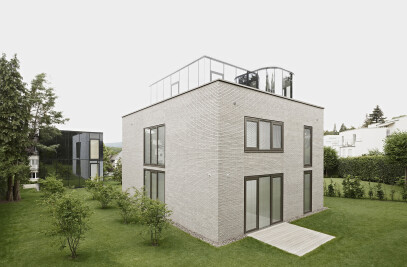Construction of a new office and production building at Eckelmann AG in Wiesbaden
Eckelmann AG was established in 1977. This medium-sized company offers its customers practical solutions for electronic machine controls and software development and system integration for the system automation. The spectrumranges from compact device control through to the automation of scatteredindustrial systems.
CHRIST.CHRIST. architects have been working for Eckelmann AG since 1985. Todate three buildings have been created in five construction phases in the course of this cooperation.
Since the beginning the objective and the task have been to design a commercially justified system of buildings that can be expanded at any time. A building system that can react flexibly to the changing needs, demands and situations.
The new office and production building was completed in October 2013.
The clearly contoured building references the existing building in its size, height, proportion and the position of its window lines. It supports and supplements the existing group of buildings but has become a visible symbol of the further development of Eckelmann AG with its new, double level façade in the sense that change is the only constant
Entrances and floors
The building opens on the west side with two entrances on the ground floor.
There is a further entrance on the east side on the basement level. The basement and the ground floor are used for producing and assembling switchboards and switch cabinets. An outdoor storage area is located next to the loading yard adjacent to the basement level. Circuit board production takes place on the first floor and office areas are located on the second floor.
The individual floors are connected via a staircase on the west side, with a goods lift adjacent to the staircase that connects the ground floor to the basement and is also used for goods deliveries. The buildings are connected to one another with glass bridges that provide an efficient connection of all areas and a high degree of interaction and communication opportunities.
Double facade
The impact panes that are positioned in front of the windows serve as glazing to protect from falls. A surrounding joint between the outer panes of glass and the plaster facade provides the necessary ventilation.
The panes closed top and bottom with steel profiles and also held mechanically by steel brackets. A black screen print is applied to cover the glued joints. Individual impact panes can be opened automatically next to the production areas for uninterrupted smoke extraction in the event of fire.
As the glazing is secured against falling it was not necessary to install a balustrade or parapet bar, which enables unhindered views to the outside. The increased requirements with regard to forces on the impact pans also provide substantial protection against intruders, whereby the windows behind these panes can be opened in summer during the night. This provides for natural ventilation of the rooms and for a cooling of the thermal mass, whereby the rooms can be kept cool during the days to a great extent.
Because of cooling overnight and sun protection on the outside it was not necessary to install a mechanical cooling system, despite the high proportion of glass. Only particularly sensitive areas were fitted with individually activated cooling.
The sun protection is positioned between the windowpanes. It can remain closed during storms and strong winds because it is protected by the impact panes, and can fulfil its functions, which is a substantial advantage given the location of the building, which is exposed to the wind. The white and infinitely adjustable sun protection allows targeted guidance of daylight into the interior of the rooms, enabling glare-fee work at screen workplaces. The impact panes together with the triple heat-protection glazing on the windows behind them provide good sound insulation, which was necessary because of the immediate vicinity of the 455 main road.
Uniform interior colours
The facility near the switch cabinet production comprises numerous pieces of special furniture and objects, boxes and shelves with different surfaces and colours.
In order to keep the range of colours and surfaces to a minimum and thus to achieve a calm atmosphere and pleasant workplace environment all the structural surfaces were installed in a light grey. This colour concept was continued consistently in the staircase, the toilettes, the kitchenettes and other auxiliary rooms.

































